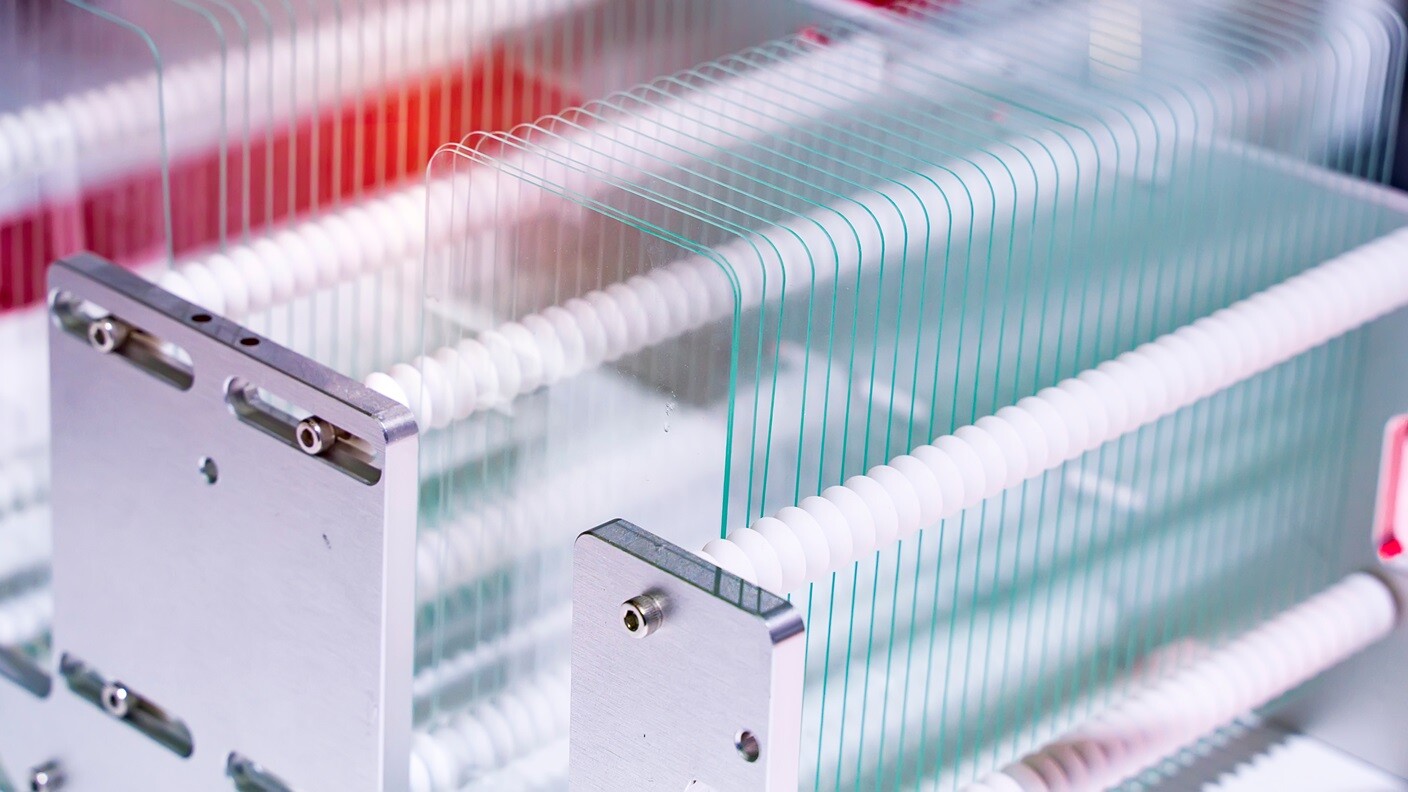Considerations for designing with glass
In consumer electronic devices, glass materials are often selected for their premium look and feel, visual clarity, scratch resistance, and durability. We frequently see glass used in display covers, camera lenses, and device enclosures. The advanced glasses available today enable beautiful, functional, and durable devices – however, careful product design is necessary for success. In this article, we’ll go over some basics of glass materials and tips for designing products with glass components.
Properties of glass
It’s important to understand how glass behaves as a material before designing it into a product. Since glass is brittle, one of the biggest challenges is preventing it from cracking. Glass components often look perfectly smooth on the surface, but under a microscope the surface is filled with tiny imperfections. These imperfections are inherent to the manufacturing process and will always be present. As we’ll see below, cracks always start from one of these imperfections. Controlling the size and amount of these imperfections is a major consideration in glass manufacturing and processing.

As a brittle material, glass is very strong in compression but relatively weak in tension. For this reason, glass is often chemically tempered to improve durability. The chemical tempering process creates a layer of compressive stress at the surface of the glass.

This compressive stress tends to “squeeze” closed the tiny surface imperfections, preventing them from growing into large cracks when products are dropped or impacted. This is one reason why glass is strong in compression but weak in tension: compression tends to close cracks, but tension can rapidly open even the smallest imperfection.

Even with a well-controlled manufacturing process and effective chemical tempering, glass is always filled with microscopic surface defects. It’s the product designer’s responsibility to ensure these defects aren’t stressed to the point where they become visible cracks.
Design Tips with Sample Glass product
Below, we illustrate several design tips to consider when working with glass. We’ll use a simple example device with a glass display cover, an enclosure, and common internal components.

When devices are impacted or dropped, glass tends to bend around internal components. This bending creates tension, which can lead to fractures. Because of this, every part of the system must be designed with glass in mind. Some examples of risky design and tips for improvement are shown below. These tips can prevent glass cracks when products are dropped onto hard surfaces or when other foreign objects impact the glass.
| Tip | Risky Design | Improved Design |
| Minimize air gaps between glass and internal components. |
High deflection and bending |
Gentle bending if components close to glass |
| Minimize height differences between adjacent components. |
High bending across height difference
|
Gentle bending if component height matched |
| Eliminate stiffness transitions under glass. |
High bending when soft mounting compresses |
Gentle bending without stiffness transition |
| Carefully design support structures around glass edges. |
High stress with short unsupported span |
Gentle bends with longer unsupported span |
Glass edges warrant special attention when designing durable devices. Glass edges typically have small surface areas and are susceptible to concentrated stresses when impacted.

Large glass covers may extend to the product edge and are one of the first components to bear the impact when a device is dropped. Screens with cracked edges are all too common - here are a few tips to protect edges:
| Tip | Risky Design | Improved Design |
| Avoid exposed glass edges if possible |
|
Glass edge below enclosure wall Edge fully enclosed 
|
| Understand and control the shape of glass edge |  Sharp edges crack easily Sharp edges crack easily
|
Rounded edges are more durable
|
| Consider including damping | Stiff, hard enclosures can over stress glass edges if a device is dropped on its edge
|
Damping materials can protect glass edges
|
| Give glass time and space to decelerate during impacts | Glass edge is close to enclosure. Edge quickly crashes into enclosure if device dropped
|
Glass has time to decelerate before contacting enclosure
|
Glass components in consumer electronics can look elegant, feel premium in your hand, and last for years if thoughtfully designed. It’s important to consider the entire system of surrounding components, not just the glass piece itself. The examples above are often visually exaggerated to show the principle. In real products, fractions of a millimeter often make or break a design.
Looking for a guide on your consumer electronics product development journey.





 Soft mounting for sensitive component
Soft mounting for sensitive component Rigid shield added
Rigid shield added




